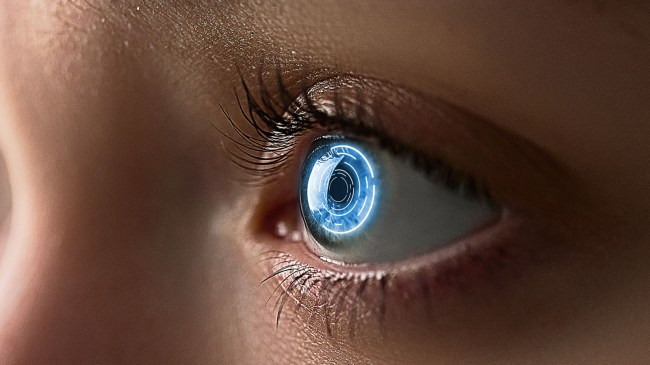iStockphoto
Scientists at the University of California, Berkeley claim they have created a way to trick the human eye, allowing it to see a color that humans have never seen before. They call the technique “Oz” and the new color “Olo.”
According to New Scientist, five people were able to see a blue-green color that has supposedly never been witnessed by humans before, thanks to “Oz.”
The researchers state in their study, published in the journal Science Advances, that they achieved this milestone by “directly controlling the human eye’s photoreceptor activity via cell-by-cell light delivery.”
The human eye perceives color with the retina, which contains photoreceptors including three types of light-detecting cone cells called S, M and L – small, medium and long wavelengths of the visible spectrum. M cones are most sensitive to green, but to see a blue-green color at least two types of cone cells are activated.
The scientists, using “Oz,” figured out how to directly stimulate a single cone by hitting it with microdoses of laser light.
“Theoretically, novel colors are possible through bypassing the constraints set by the cone spectral sensitivities and activating M cone cells exclusively,” they wrote. “In practice, we confirm a partial expansion of colorspace toward that theoretical ideal. Attempting to activate M cones exclusively is shown to elicit a color beyond the natural human gamut, formally measured with color matching by human subjects.
“They describe the color as blue-green of unprecedented saturation. Further experiments show that subjects perceive Oz colors in image and video form. The prototype targets laser microdoses to thousands of spectrally classified cones under fixational eye motion. These results are proof-of-principle for programmable control over individual photoreceptors at population scale.”
The researchers hope to use “Oz” to study and treat color blindness, especially those with red-green color blindness.
“Showing olo is definitely cool, but we’re all looking toward the future for how we can use the technology itself,” co-lead researcher Hannah Doyle, a fourth-year PhD student in electrical engineering at University of California, Berkeley, told Gizmodo. “I’m actually now working on a project using the same exact system to simulate cone loss, like what happens in retinal disease, in healthy subjects.”
Content shared from brobible.com.

